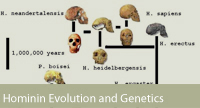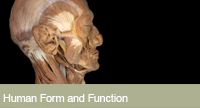




RECENT PUBLICATIONS
Fred R. Adler
Graham, E.J. and F. R. Adler. 2013. Long-term models of oxidative stress and mitochondrial damage in insulin resistance progression. Journal of Theoretical Biology 340, 238-250.
Toth, D.J.A.; A.V. Gundlapalli; W.A. Schell; K. Bulmahn; T.E. Walton; C.W. Woods; C. Coghill; F. Gallegos; M.H. Samore; and F.R. Adler. 2013. Quantitative models of the dose-response and time course of inhalational anthrax in humans. PLoS Pathogens, 9:e1003555.
Adler, F.R. and C.J. Tanner. 2013. Urban Ecosystems: Ecological Principles for the Built Environment. Cambridge University Press
Adler, F.R. and P.S. Kim. 2013. Models of contrasting strategies of rhinovirus immune
manipulation. Journal of Theoretical Biology, 327:1-10.
Liou, T.G.; F.R. Adler; R.H. Keogh; Y. Li; J.L. Jensen; W. Walsh; K. Packer; T. Clark; H. Carveth; J. Chen; S.L. Rogers; C. Lane; J. Moore; A. Sturrock; R. Paine III; D.R. Cox; and J.R. Hoidal. 2012. Sputum biomarkers and the prediction of clinical outcomes in patients with cystic fibrosis. PLoS ONE, 7:e42748.
Remien, C.H.; F.R. Adler; L. Waddoups; T.D. Box; and N.L. Sussman. 2012.
Mathematical modeling of liver injury and dysfunction after acetaminophen overdose: Early discrimination between survival and death. Hepatology, 56:727—734.
Huynh, G.T. and F.R. Adler. 2011. Alternating Host Cell Tropism Shapes the Persistence, Evolution and Coexistence of Epstein--Barr Virus Infections in Human. Bulletin of Mathematical Biology, 73:1754--1773.
Huynh, G.T. and F.R. Adler. 2011. Mathematical modeling the age dependence of Epstein-Barr virus associated infectious mononucleosis. Mathematical Medicine and Biology, 29:245-261.
Adrian V. Bell
Bell, A.V. and B. Winterhalder. 2014. "The Population Ecology of Despotism: Concessions and Migration Between Central and Peripheral Habitats." Human Nature 25(1): 121-135. doi: 10.1007/s12110-014-9190-7.
Bell, A.V.; K. Hinde; and L. Newson. 2013. "Who was Helping? The Scope for Female Cooperative Breeding in Early Homo. PLoS ONE 8(12): e83667.
doi: 10.1371/journal.pone.0083667
Waring, T.; and A.V. Bell. 2013. "Ethnic dominance damages cooperation more than ethnic diversity: results from multi-ethnic field experiments in India." Evolution & Human Behavior 34 (6), pp. 398-404. doi:10.1016/j.evolhumbehav.2013.07.003
Bell, A.V. 2013. "Evolutionary Thinking in Microeconomic Models: Prestige Bias and Market Bubbles." PLoS ONE 8(3): e59805. doi:10.1371/journal.pone.0059805
A.V. Bell. 2013. "The Dynamics of Culture Lost and Conserved: Demic Migration As a Force in New Diaspora Communities." Evolution & Human Behavior 34, pp. 23-28.
Beheim, B. and A.V. Bell. 2011. “Inheritance and Ecology: Evolution of Canoe Traits in Eastern Oceania”. Proceedings of the Royal Society B 278: 3089-3095.
Lybbert, T. and A.V. Bell. 2010. “Stochastic Benefit Streams, Learning and Technology Diffusion: Why Drought Tolerance is not the new Bt.” AgBioForum 13(1): 13-24. With commentary in Nature Biotechnology 28: 553-554 (2010).
Bell, A.V.; P.J. Richerson; and R. McElreath. 2009. “Culture Rather than Genes Provides Greater Scope for the Evolution of Large-Scale Human Prosociality.” Proc. Nat. Acad. Sci. 106(42):17671-17674.
Mulde, M.B.; S. Bowles; T. Hertz; A.V. Bell, et al., 2009. “Intergenerational Wealth Transmission and the Dynamics of Inequality in Small-Scale Societies.” Science 326 682-688.
David R. Carrier
Carrier, D.R. and M.H. Morgan. 2014. Protective buttressing of the hominin face. Biological Reviews in Press.
Morgan, M.H. and D.R. Carrier. 2013. Protective buttressing of the human fist and the evolution of hominin hands. Journal of Experimental Biology 216, 236-244.
Carrier, D.R.; C. Anders and N. Schilling. 2011. The musculoskeletal system of humans is not tuned to maximize the economy of locomotion. PNAS108, 18631-18636.
Carrier, D.R. 2011. The advantage of standing up to fight and the evolution of habitual bipedalism in hominins. PLoS ONE 6(5): e19630. doi:10.1371/ journal.pone.0019630.
Thure E. Cerling
Chesson, L.A.; J.R. Ehleringer and T.E. Cerling, 2011, Light–element isotopes (H, C, N, and O) as tracers of human diet: A case study on fast food meals. M. Baskaran (ed.), Handbook of Environmental Isotope Geochemistry, Advances in Isotope Geochemistry, Springer–Verlag Berlin Heidelberg. p. 707–723. DOI 10.1007/978–3–642–10637–8_33
Martinelli L.A.; G.B. Nardoto; F.D. Rinaldi; J.P. Ometto; L.A. Chesson; T.E. Cerling; J.R. Ehleringer. 2011, Worldwide stable carbon and nitrogen isotopes of Big Mac patties: An example of a truly ‘‘glocal’’ food. Food Chemistry 127: 1712–1718. doi:10.1016/j.foodchem.2011.02.046
Levin, N.E.; F.H. Brown; A.K. Behrensmeyer; R. Bobe; T.E. Cerling. 2011. Paleosol carbonates from the Omo Group: isotopic records of local and regional environmental change in East Africa. Palaeogeography, Palaeoecology Palaeoclimatology 307: 75–89. doi:10.1016/j.palaeo.2011.04.026
Cerling, T.E.; E. Mbua; F.M. Kirera; F.K. Manthi; F.E. Grine; M.G Leakey; M. Sponheimer; K.T. Uno. 2011. Diet of Paranthropus boisei in the early Pleistocene of East Africa. Proceedings of the National Academy of Science 108: 9337–9341. doi/10.1073/pnas.1104627108
Cerling, T.E.; J.G. Wynn; S.A. Andanje; M.I. Bird; D. Kimutai; N.E. Levin; W. Mace; A.N. Macharia; J. Quade; C.H. Remien. 2011. Woody cover and hominin environments in the past 6 million years. Nature 476: 51–56.
Valenzuela, L.O.; L.A. Chesson; S.P. O’Grady; T.E. Cerling; J.R. Ehleringer. 2011, Spatial distributions of carbon, nitrogen and sulfur isotope ratios in human hair across the central United States. Rapid Communications in Mass Spectrometry 25: 861–868. DOI: 10.1002/rcm.4934
Cerling, T.E.; E. Mbua; F.M. Kirera; F.K. Manthi; F.E. Grine; M.G. Leakey; M. Sponheimer; K.T. Uno; J.A. Lee–Thorp. 2011. Response to Godfrey et al: Out of the woods. Proceeding of the National Academy of Science. doi: 10.1073/pnas.1111409108.
Cerling, T.E.; N.E. Levin; B.H. Passey. 2011. Stable isotope ecology in the Omo–Turkana Basin. Evolutionary Anthropology 20: 228–237.
Chesson L.A.; L.O. Valenzuela; G.J. Bowen; T.E. Cerling; J.R. Ehleringer. 2011. Consistent predictable patterns in the hydrogen and oxygen stable isotope ratios of animal proteins consumed by modern humans in the USA. Rapid Communications in Mass Spectrometry 25: 3713–3722. DOI: 10.1002/rcm.5283.
Podlesak, D.W.; G.J. Bowen; S. O'Grady; Cerling T.E; Ehleringer J.R. 2012, ?2H and ?18O of human body water: a GIS model to distinguish residents from non-residents in the contiguous USA. Isotopes in Environmental and Health Studies 48: 259-279.
O'Grady, S.P.; L.O. Valenzuela; C.H. Remien; L.E. Enright; M.J. Jorgensen; J.R. Kaplan; J.D. Wagner; T.E. Cerling; J.R. Ehleringer, 2012, Hydrogen and oxygen isotope ratios in body water and hair: modeling isotope dynamics in nonhuman primates. American Journal of Primatology 74: 651–660. doi: 10.1002/ajp.22019.
Valenzuela, L.O.; L.A. Chesson; G.J. Bowen; T.E. Cerling; J.R. Ehleringer. 2012. Dietary heterogeneity among western industrialized countries reflected in the stable isotope ratios of human hair. PLOS ONE. 10.1371/journal.pone.0034234
Tipple, B.J.; L.A. Chesson; B.R. Erkkila; T.E. Cerling; J.R. Ehleringer. 2012. B–HIVE: Beeswax Hydrogen Isotopes as Validation of Environment. Part II. Compound–specific hydrogen isotope analysis. Food Chemistry 134: 494–501. doi:10.1016/j.foodchem.2012.02.106
Macharia, A.N.; K.T. Uno; T.E. Cerling; F.H. Brown. 2012. Isotopically distinct modern carbonates in abandoned livestock corrals in Northern Kenya. Journal of Archaeological Science 39: 2198–2205.
Blumenthal S.A.; K.L. Chritz; J.M. Rothman; T.E. Cerling. 2012. Detecting intra–annual dietary variability in wild mountain gorillas by stable isotope analysis of feces. Proceedings of the National Academy of Science 109: 21277–21282. doi: 10.1073/pnas.1215782109
Cerling, T.E.; F.K. Manthi; E. Mbua; L.N. Leakey; M.G. Leakey; R.E. Leakey; F.H. Brown; F.E. Grine; J.A. Hart; P. Kaleme; H. Roche; K.T. Uno; B.A. Wood. 2013. Stable isotope-based diet reconstructions of Turkana Basin hominins. Proceedings of the National Academy of Sciences 110: 10501–10506.
Cerling, T.E.; K.L. Chitz; N.G. Jablonski; M.G. Leakey; F.K. Manthi. 2013. Diet of Theropithecus from 4 to 1 Ma in Kenya. Proceedings of the National Academy of Sciences 110: 10507–10512.
Sponheimer, M.; Z. Alemsegad; T.E Cerling; F.E. Grine; W.H. Kimbel; M.G. Leakey; J.A. Lee-Thorp; F.K. Manthi; K. Reed; B.A. Wood; J.G. Wynn. 2013. Isotopic Evidence of early hominin diets: past, present, and future. Proceedings of the National Academy of Sciences 110: 10513–10518.
Uno, K.T.; J. Quade; D.C. Fisher; G. Wittemyer; I. Douglas–Hamilton; S.A. Andanje; P. Omondi; M. Litoroh; T.E. Cerling. 2013. Bomb–curve radiocarbon (14C) dating of recent biologic tissues and applications to stable isotope (paleo)ecology and wildlife forensics. Proceedings of the National Academy of Sciences 110: 11736–11741.
Sponheimer, M.; Z. Alemseged; T.E. Cerling; F.E. Grine; W.J. Kimbel; M.G. Leakey; J. Lee-Thorp; F.K. Manthi; K.E. Reed; B.A. Wood; J.G. Wynn. 2013, On a reluctance to conjecture about animal food. Proceedings of the National Academy of Sciences 110: doi/10.1073/pnas.1314368110.
Cerling, T.E. (Editor) 2014. Treatise of Geochemistry. Volume 14. Archaeology and Anthropology. Elsevier, London. 393 p.
Cerling, T.E.. 2014. Editor's Volume editor's introduction. In: (Cerling TE, Editor) Treatise of Geochemistry. Volume 14. Archaeology and Anthropology. Elsevier, London. p. xxiii-xxiv.
Cerling, T.E.. 2014. Stable isotope evidence for hominin environments in eastern Africa. In: (Cerling TE, Editor) Treatise of Geochemistry. Volume 14. Archaeology and Anthropology. Elsevier, London. p. 157-167.
Chesson, L.A.; B.J. Tipple; J.D. Howa; G.J. Bowen; J.E. Barnette; T.E. Cerling; J.R. Ehleringer. 2014. Stable isotopes in forensics applications. In: (Cerling TE, Editor) Treatise of Geochemistry. Volume 14. Archaeology and Anthropology. Elsevier, London. p. 285-317.
Sponheimer, M. and T.E. Cerling. 2014, Investigating ancient diets using stable isotopes in bioapatites. In: (Cerling TE, Editor) Treatise of Geochemistry. Volume 14. Archaeology and Anthropology. Elsevier, London. p. 341-355.
Macharia, A.N.; T.E. Cerling; M.J. Jorgensen; J.R. Kaplan. 2014, The hair-diet 13C and 15N fractionation in Chlorocebus aethiops sabaeus based on a controlled diet study. Annales Zoologici Finnici 51:66-72.
Patnaik R.; T.E. Cerling; K.T. Uno; J.G. Fleagle. 2104. Diet and habitat of Siwalik primates Indopithecus, Sivaladapis and Theropithecus. Annales Zoologici Finnici 51: 123-142.
Cerling, T.E.; F.H. Brown; J.G. Wynn. 2014. Comment on White in Domínguez-Rodrigo (Current Anthropology, Feb 2014): On the environment of Aramis. Current Anthropology, in press.
Remien, C.H.; F.R. Adler; L.A. Chesson; L.O. Valenzuela; J.R. Ehleringer; T.E. Cerling. 2014. Deconvolution of isotope signals from bundles of multiple hairs, Oecologia, in press.
Cerling, T.E.; E.O. Espinoza; F.M. Gakuya; G.K. Bar-Gal; A.J. Guithrie; S.H. Hitchin; K. Hornig; R.J.M. Jobin; A.M.T. Linacre; G.M. Miller; R.S. Ogden; K. Ouitavon; R.B. Potter; B. Van Rensburg; D. Schindel; F.T. Sitam; D. Stewart; J. Thaler; M.V. Tien; E. Toledo; F.D. Wamukoya; S.K. Wasser; B. Weir; Y.C. Xu; S.A. Ziegler. UNODC*, 2014, Guidelines for forensic methods and procedures of ivory sampling and analysis. United Nations Office of Drugs and Crime, Vienna, Austria. In press. *United Nations Office of Drugs and Crime.
Chesson, L.A.; B.J. Tipple; J.E. Barnette; T.E. Cerling; J.R. Ehleringer 2014. The potential for application of ink stable isotope analysis in questioned document examination. Journal of Forensic Science. In press.
Reports to Congress as member of the US Nuclear Waste Technical Review Board
NWTRB*, 2011, Technical Advancement and Issues Associated with the Permanent Disposal of High Activity Wastes: Lessons Learned from Yucca Mountain and Other Programs. Government Printing Office, 130 pp. *Board members: J. Garrick B.J.; M.D. Abkowitz; W.H. Arnold; T.E. Cerling; D.J. Duquette; G.M. Hornberger; R.M. Lantanision; A.C. Kadak; A. Mosleh; W.M. Murphy; H. Petroski.
NWTRB*, 2011, Experience Gained From Programs to Manage High–Level Radioactive Waste and Spent Nuclear Fuel in the United States and Other Countries. Government Printing Office, 72 pp. *Board members: J. Garrick B.J.; M.D. Abkowitz; W.H. Arnold; T.E. Cerling; D.J. Duquette; G.M. Hornberger; R.M. Lantanision; A.C. Kadak; A. Mosleh; W.M. Murphy; H. Petroski.
Kristen Hawkes
Kim. P.S.; J.S. McQueen; J.E. Coxworth; K. Hawkes. 2014. Grandmothering drives the evolution of longevity in a probabilistic model. Journal of Theoretical Biology (in press)
Hawkes, K. 2014. Primate sociality to human cooperation, why us and not them? Hum Nature 25 (1): 28-48.
Tackney, J.; R.M. Cawthon; J.E. Coxworth & K. Hawkes. 2014. Blood cell telomere lengths and shortening rates of chimpanzee and human females. Am J Hum Biol Article first published online: 15 MAR 2014 | DOI: 10.1002/ajhb.22538
Blevins, J.K.; J.E. Coxworth; J.G. Herndon & K. Hawkes. 2013. Brief communication: Adrenal androgens and aging: Female chimpanzees (Pan troglodytes) compared with women. Am J Phys Anthropol 151(4):643-8.
Hawkes, K. & J.E. Coxworth. 2013. Grandmothers and the evolution of human longevity: A Review of findings and future directions. Evolutionary Anthropology 22(6):294–302.
Kim, P.S.; J.E. Coxworth & K. Hawkes. 2012. Increased longevity evolves from grandmothering. Proc Roy Soc B 279: 4880–4884. Chosen by the Faculty of 1000 http://f1000.com/prime/717965135
Hawkes, K.; K.R. Smith & J.K. Blevins. 2012. Human actuarial aging increases faster when background death rates are lower: a role for heterogeneity? Evolution 66(1): 103-14 Chosen by the Faculty of 1000 http://f1000.com/13478958.
Hawkes, K. 2010. Grandmother effects, heterogeneity, and the evolution of human aging: Guidance from human-chimpanzee comparisons. Proc Nat Acad Sci (USA) 107 (Supplement 2): 8977-8984.
Hawkes, K. & K.R. Smith. 2010. Do women stop early? Similarities in fertility decline between humans and chimpanzees. Ann NY Acad Sci 1204: 43-53.
Hawkes, K.; K.R. Smith & S.L. Robson. 2009. Mortality and fertility rates in humans and chimpanzees: how within-species variation complicates Cross-species comparisons. Am J Hum Biol. 21:578–586.

